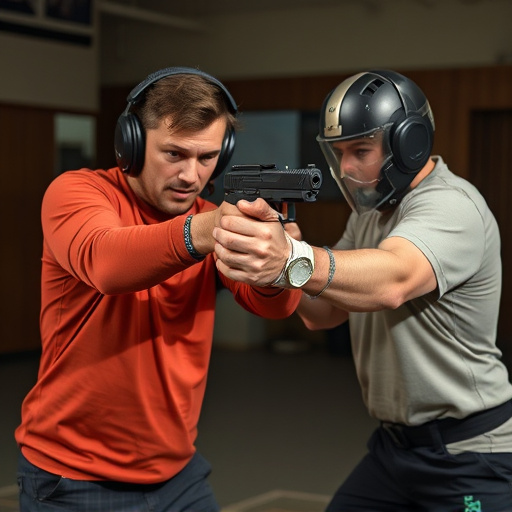Proper charging of stun guns is crucial for both safety and effectiveness, ensuring optimal range, battery life, and performance. Following manufacturer guidelines, using the correct charger, avoiding constant charging, and regularly deep discharging are key practices. Stun guns, governed by legal restrictions worldwide, require responsible ownership protocols including training, registration, and adherence to local laws. With a typical effective range of 15-20 feet, proper charging techniques enable officers to safely incapacitate subjects while navigating legal and safety considerations. Learn how to charge stun guns correctly for peak functionality and extended lifespan.
Stun weapons, with their non-lethal force capabilities, have evolved beyond traditional tasers. This article delves into the multifaceted world of stun weapon projectile range, offering insights on essential components and techniques. We explore factors influencing distance and accuracy, emphasizing the critical role of proper charging techniques to maximize battery life and power. Additionally, we navigate legal considerations and real-world applications, shedding light on their effectiveness while highlighting safety measures, including how to charge a stun gun properly.
- Stun Weapon Basics: Understanding the Technology
- Factors Affecting Projectile Range: Distance and Accuracy
- Charging Techniques: Maximizing Battery Life and Power
- Legal Considerations: Regulations and Use Cases for Stun Guns
- Real-World Applications: Effectiveness and Safety Measures
Stun Weapon Basics: Understanding the Technology
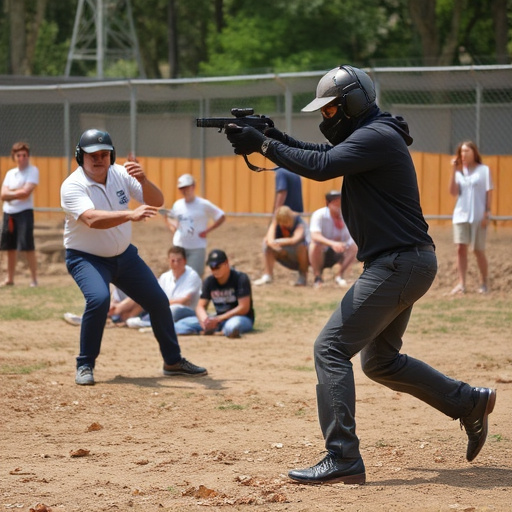
Stun weapons, often known as stun guns or electric tasers, are innovative devices designed to temporarily incapacitate a target with an electric shock. These weapons use high-voltage, low-current electrical energy to disrupt muscle control in the body, leading to a loss of balance and consciousness for a brief period. Understanding how these tools work is crucial when it comes to their effective deployment and safety.
The charging process of a stun gun is a critical aspect that should not be overlooked. Proper charging ensures the weapon functions optimally when needed. Users must follow manufacturer guidelines, typically involving plugging the device into a compatible charger for a specified duration to achieve the required voltage level. This step is essential in maximizing the stun gun’s range and impact while also preventing potential user harm by ensuring safe electrical operation.
Factors Affecting Projectile Range: Distance and Accuracy
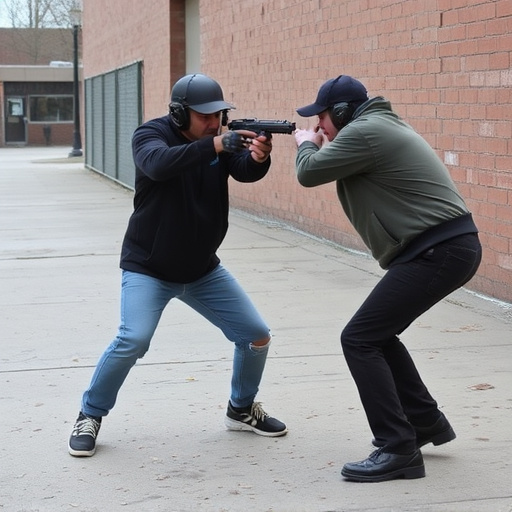
The range at which a stun weapon can effectively deploy its jolting effects is influenced by several factors, with distance and accuracy being two of the most significant. The proper charging of a stun gun is a crucial first step to ensure optimal performance. Following manufacturer guidelines on how to charge stun guns properly is essential; this process ensures the device delivers its maximum electric current when activated.
Once charged, the distance the projectile can travel accurately becomes more dependent on environmental conditions such as wind speed and direction, surface friction, and gravity. The user’s aim and technique also play a critical role in determining the range and effectiveness of the stun weapon. Therefore, a combination of proper preparation (charging) and skill is required to maximize the reach and impact of a stun gun projectile.
Charging Techniques: Maximizing Battery Life and Power
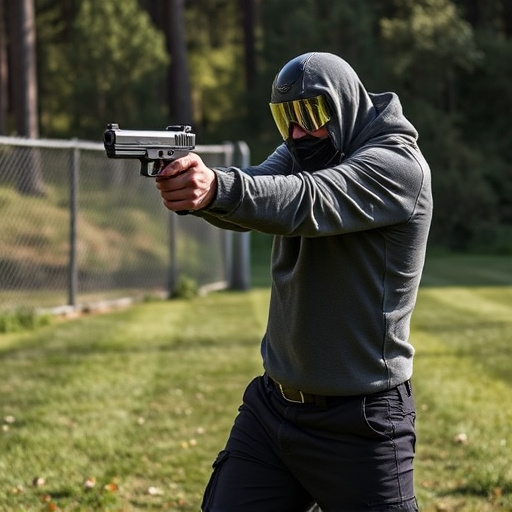
Stun weapon maintenance begins with understanding the importance of proper charging techniques. To maximize battery life and power, users should adhere to specific guidelines when charging their stun guns. Firstly, always use the recommended charger provided by the manufacturer. Using incompatible chargers can lead to damage or reduced performance. Secondly, allow the device to reach its full charge before unplugging it; this ensures optimal energy storage.
Regular deep discharges and subsequent full charges enhance battery longevity. Avoid leaving your stun gun charged constantly as it may shorten the battery’s lifespan. Instead, aim for a balanced approach by charging it when necessary and avoiding overcharging. Proper care will not only extend the battery life but also guarantee consistent performance when you need it most.
Legal Considerations: Regulations and Use Cases for Stun Guns
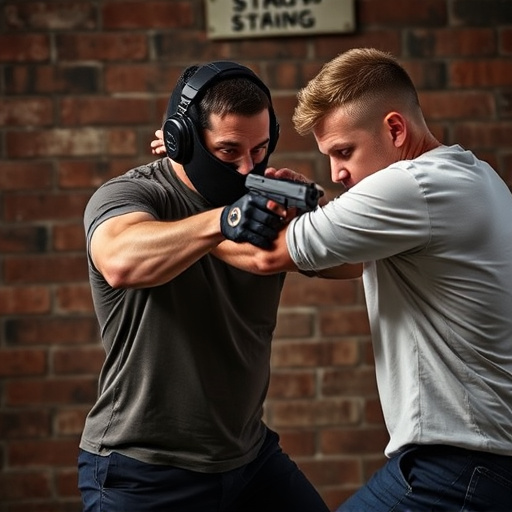
Stun guns, or electrical conduction weapons (ECWs), are designed to incapacitate targets through electric shock, rendering them temporarily defenseless. However, their use is governed by strict legal considerations and regulations that vary significantly across jurisdictions. Understanding these regulations is crucial before considering the purchase or deployment of stun guns, especially since proper handling and charging techniques are paramount for safety and effectiveness.
In many countries, stun guns fall under specific categories of controlled weapons, subject to licensing, registration, and use restrictions. Users must follow strict protocols for responsible ownership, including safe storage, regular maintenance, and adherence to local laws governing the use of force. Proper training in the use of stun guns is essential to ensure they are employed only when necessary for self-defense or law enforcement purposes, as misuse can lead to severe legal repercussions. Additionally, knowing how to charge stun guns properly is vital to guarantee optimal performance and extend their operational life.
Real-World Applications: Effectiveness and Safety Measures
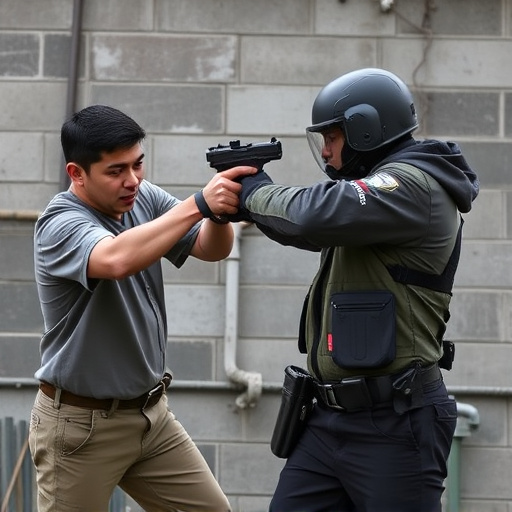
In real-world applications, stun weapons have proven their effectiveness as non-lethal force tools in various scenarios. Law enforcement agencies worldwide utilize stun guns to subdue resistant or aggressive individuals, offering a safer alternative to deadly force. The range of these devices varies; typically, a properly charged stun gun can deliver an effective shock within 15–20 feet (4.6–6 meters). This range ensures officers can maintain distance while still incapacitating a subject effectively.
Safety measures are paramount when handling and deploying stun weapons. Proper training is essential to ensure users understand the device’s capabilities and limitations. Additionally, regular maintenance and learning how to charge stun guns properly extend their lifespan and guarantee optimal performance when needed. Users must also be aware of local laws and regulations regarding stun gun usage to uphold legal and ethical standards during operations.
Stun weapons, with their non-lethal capabilities, offer a powerful tool for personal safety. Understanding the technology behind them, the factors influencing projectile range, and proper charging techniques is essential for optimal performance. Legal considerations and real-world applications highlight the importance of responsible use and safety measures. By following best practices, including learning how to charge a stun gun properly, individuals can ensure these devices serve as effective tools for self-defense while adhering to legal guidelines.
